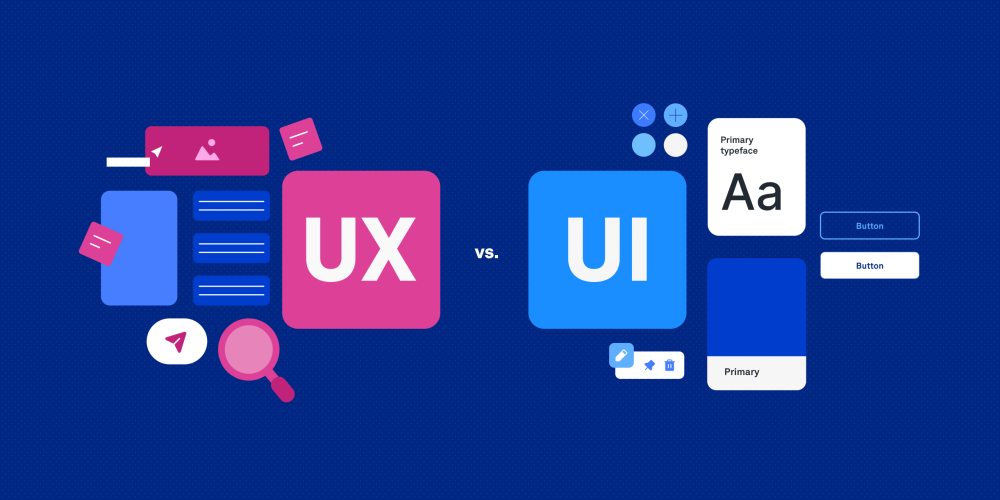The usefulness and scalability of online apps are directly affected by user interface/UX design. Modern consumers want quick, intuitive, consistent device experiences. Poor design results in high bounce rates and low engagement. Advanced design patterns support developers in creating reusable, maintainable interfaces that have performance optimization in mind. Technical systems and design ideas are combined in these patterns. As capabilities and data rise, they guarantee that applications stay scalable. Effective user interface/user experience also improves brand credibility and user happiness, hence it is a crucial part of website design. Enrol in the UI UX Course in Delhi to gain hands-on skills in modern design practices.
Impact Of UI/UX On Web Applications
Successful web applications depend critically on UI/UX. Users may easily navigate the application thanks to a well-designed interface. Good UI makes elements visible and reachable. UX concentrates on consumers’ general satisfaction and experience.
Poor UI/UX in web applications usually results in high bounce rates. Users leave programs that seem difficult or sluggish. Great UI/UX increases consumer retention and engagement. By pointing consumers toward desired actions, it also boosts conversion rates.
Responsive design guarantees that the program runs smoothly on many devices. Fast loading and clear processes improve user experience; accessibility in user interface and user experience makes the app usable for those with disabilities. To get an advantage, businesses spend money on UI/UX. It enables brand loyalty and trust development. Good visual hierarchy and clear navigation help to lower consumer errors.
Simply put, UI/UX has a direct influence on usability, performance, and the general success of web applications.
Advanced UI/UX Design Patterns for Scalable Web Applications
Scalability and performance of web apps depend on UI/UX design, which is therefore a major consideration. Users start to expect consistent, simple, and high-performing interfaces as applications expand. Advanced design patterns allow support for sophisticated features while maintaining usability. These patterns guarantee efficiency, responsiveness, and maintainability across many platforms in contemporary web applications. Scalable UI/UX solutions require designers to combine design concepts with technical systems.
1. Component-Based Architecture
Component-based design enables developers to create reusable UI elements. Every part has its own state, logic, and styling; therefore, it is self-contained. This approach improves maintainability and lowers redundancy. React, Vue, and Angular among other systems offer indigenous support for component-based development. To build complex interfaces, components can be either nested or joined. Following this pattern guarantees uniform application throughout. By decoupling features, it also streamlines debugging and testing.
2. Atomic Design Methodology
Atomic design divides user interface components into five degrees: atoms, molecules, organisms, templates, and pages. Atoms stand for fundamental elements such input fields or buttons. Molecules organize atoms into functional units. Distinctly separated groups of molecules known as organisms are. Pages show the final user interface; templates establish layout patterns. By reusing parts across several pages, this approach fosters modularity and scalability and so lowers development time. Creating a clear hierarchy also improves designer-developer cooperation by means of atomic design. Advance your career with the UI UX Certification Course recognized by top tech companies.
3. Lazy Loading and Virtualization
Large dataset web applications call for performance improvement. Lazy loading postpone component rendering until it is necessary. Visible components alone are rendered by virtualization, hence speeding up processes and lowering memory consumption. These methods stop UI lag in sophisticated programs. Smooth user experiences are guaranteed when lazy loading is coupled with infinite scrolling. React and other frameworks provide dynamic import statements for lazy loading components. Virtual DOM techniques effectively Parts of the interface were only modified by updating.
4. Responsive and Adaptive Patterns
Scalable web applications have to function across several screen sizes and devices. Media queries, relative units, and flexible grids all define responsive design. Adaptive design identifies device type and presents optimized layouts. Using both methods guarantee utility and performance. Components have to be tested across many viewports by UX/UI designers. For mobile and desktop consumers, consistent navigation and interaction patterns are essential. Scalable typography, adaptive pictures, and modular designs help improve user experience in advanced patterns as well.
5. Design Tokens and Theming
In a reusable form, design tokens keep visual design elements including colours, fonts, and spacing. They let developers keep consistency over apps. Dynamic updating of tokens allows to execute rebranding or thematic changes. Theming allows light and dark modes as well as customized user interfaces. Design systems using tokens help to lower technical debt and increase scalability. Moreover, they make cooperation between design and development teams simpler.
Here’s a table representing the UI/UX design patterns and their use cases:
| Pattern | Description | Use Case |
| Component-Based Architecture | Reusable UI components with isolated logic | Large-scale SPAs (React, Angular) |
| Atomic Design | Hierarchical design from atoms to pages | Modular UI development |
| Lazy Loading & Virtualization | Load components/data only when needed | Data-heavy dashboards, infinite scroll apps |
| Responsive & Adaptive Patterns | Flexible layouts across devices | Cross-platform web applications |
| Design Tokens & Theming | Reusable visual properties for consistent branding | Multi-brand platforms, light/dark modes |
Conclusion
Scalable web applications need advanced UI/UX design patterns. Performance, maintainability, and customer satisfaction all get better. Modularity for component-based design and atomic architecture is provided. Data-intensive systems benefit from performance optimization through lazy loading and virtualization. Consistent experiences across devices are guaranteed by responsive and adaptive patterns. Theming and design tokens help to keep visual consistency and make updates simple. Secure your future with the UI UX Course With Placement support and industry connections. These patterns enable developers to create web applications that can expand quickly while still providing great user experiences.
